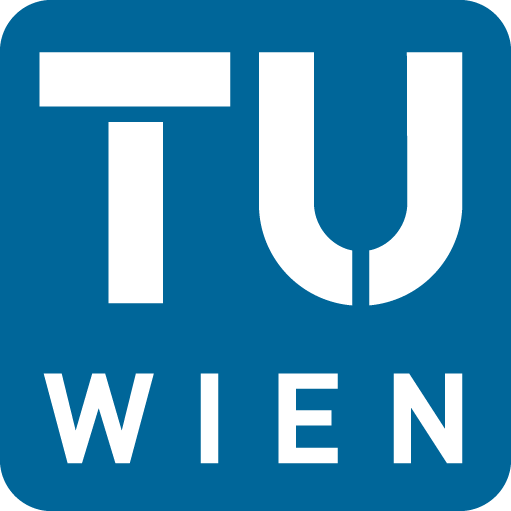DC Element
Wert
Sprache
dc.contributor.author
Kirschbaum, Diana Maria
-
dc.contributor.author
Yan, Xinlin
-
dc.contributor.author
Waas, Monika
-
dc.contributor.author
Svagera, Robert
-
dc.contributor.author
Prokofiev, Andrey
-
dc.contributor.author
Stöger, Berthold
-
dc.contributor.author
Rogl, Peter
-
dc.contributor.author
Oprea, Diana-Gabriela
-
dc.contributor.author
Felser, Claudia
-
dc.contributor.author
Valentí, Roser
-
dc.contributor.author
Garcia Vergniory, Maia
-
dc.contributor.author
Custers, Jeroen
-
dc.contributor.author
Bühler-Paschen, Silke
-
dc.contributor.author
Zocco, Diego Andres
-
dc.date.accessioned
2023-12-15T12:32:10Z
-
dc.date.available
2023-12-15T12:32:10Z
-
dc.date.issued
2023-11-29
-
dc.identifier.citation
<div class="csl-bib-body">
<div class="csl-entry">Kirschbaum, D. M., Yan, X., Waas, M., Svagera, R., Prokofiev, A., Stöger, B., Rogl, P., Oprea, D.-G., Felser, C., Valentí, R., Garcia Vergniory, M., Custers, J., Bühler-Paschen, S., & Zocco, D. A. (2023). <i>The new heavy fermion compound Ce₃Bi₄Ni₃</i>. arXiv. https://doi.org/10.48550/arXiv.2311.17903</div>
</div>
-
dc.identifier.uri
http://hdl.handle.net/20.500.12708/190360
-
dc.description.abstract
The family of cubic noncentrosymmetric 3-4-3 compounds has become a fertile ground for the discovery of novel correlated metallic and insulating phases. Here, we report the synthesis of a new heavy fermion compound, Ce3Bi4Ni3. It is an isoelectronic analog of the prototypical Kondo insulator Ce3Bi4Pt3 and of the recently discovered Weyl-Kondo semimetal Ce3Bi4Pd3. In contrast to the volume-preserving Pt-Pd substitution, structural and chemical analyses reveal a positive chemical pressure effect in Ce3Bi4Ni3 relative to its heavier counterparts. Based on the results of electrical resistivity, Hall effect, magnetic susceptibility, and specific heat measurements, we identify an energy gap of 65-70 meV, about 8 times larger than that in Ce3Bi4Pt3 and about 45 times larger than that of the Kondo-insulating background hosting the Weyl nodes in Ce3Bi4Pd3. We show that this gap as well as other physical properties do not evolve monotonically with increasing atomic number, i.e., in the sequence Ce3Bi4Ni3-Ce3Bi4Pd3-Ce3Bi4Pt3, but instead with increasing partial electronic density of states of the d orbitals at the Fermi energy. To understand under which condition topological states form in these materials is a topic for future studies.
en
dc.description.sponsorship
FWF - Österr. Wissenschaftsfonds
-
dc.description.sponsorship
FWF - Österr. Wissenschaftsfonds
-
dc.description.sponsorship
European Commission
-
dc.description.sponsorship
European Commission
-
dc.language.iso
en
-
dc.subject
Kondo semimetal
en
dc.title
The new heavy fermion compound Ce₃Bi₄Ni₃
en
dc.type
Preprint
en
dc.type
Preprint
de
dc.identifier.arxiv
2311.17903
-
dc.contributor.affiliation
University of Vienna, Austria
-
dc.contributor.affiliation
Max Planck Institute for Chemical Physics of Solids, Germany
-
dc.contributor.affiliation
Max Planck Institute for Chemical Physics of Solids, Germany
-
dc.contributor.affiliation
Goethe University Frankfurt, Germany
-
dc.contributor.affiliation
Max Planck Institute for Chemical Physics of Solids, Germany
-
dc.contributor.affiliation
Charles University, Czechia
-
dc.relation.grantno
I 4047-N27
-
dc.relation.grantno
I 5868-N
-
dc.relation.grantno
824109
-
dc.relation.grantno
101055088
-
tuw.project.title
Extreme Spin-Bahn-Kopplung für neue Quantenzustände
-
tuw.project.title
Quantum phase transitions and collective modes
-
tuw.project.title
Europäische Mikrokelvin Plattform
-
tuw.project.title
Correlation-driven metallic topology
-
tuw.researchinfrastructure
Röntgenzentrum
-
tuw.researchTopic.id
Q6
-
tuw.researchTopic.name
Quantum Many-body Systems Physics
-
tuw.researchTopic.value
100
-
tuw.publication.orgunit
E138-04 - Forschungsbereich Quantum Materials
-
tuw.publication.orgunit
E057-04 - Fachbereich Röntgenzentrum
-
tuw.publication.orgunit
E138-50-3 - Fachgruppe Technische Assistenz
-
tuw.publisher.doi
10.48550/arXiv.2311.17903
-
dc.description.numberOfPages
18
-
tuw.author.orcid
0000-0002-0087-474X
-
tuw.author.orcid
0000-0002-8200-2063
-
tuw.author.orcid
0000-0003-0497-1165
-
tuw.author.orcid
0000-0001-7336-3062
-
tuw.author.orcid
0000-0001-6974-1489
-
tuw.author.orcid
0000-0002-6958-0416
-
tuw.publisher.server
arXiv
-
wb.sciencebranch
Physik, Astronomie
-
wb.sciencebranch.oefos
1030
-
wb.sciencebranch.value
100
-
item.cerifentitytype
Publications
-
item.languageiso639-1
en
-
item.fulltext
no Fulltext
-
item.openairetype
preprint
-
item.openairecristype
http://purl.org/coar/resource_type/c_816b
-
item.grantfulltext
none
-
crisitem.project.funder
FWF - Österr. Wissenschaftsfonds
-
crisitem.project.funder
FWF - Österr. Wissenschaftsfonds
-
crisitem.project.funder
European Commission
-
crisitem.project.funder
European Commission
-
crisitem.project.grantno
I 4047-N27
-
crisitem.project.grantno
I 5868-N
-
crisitem.project.grantno
824109
-
crisitem.project.grantno
101055088
-
crisitem.author.dept
E138-04 - Forschungsbereich Quantum Materials
-
crisitem.author.dept
E138-04 - Forschungsbereich Quantum Materials
-
crisitem.author.dept
E138-50-3 - Fachgruppe Technische Assistenz
-
crisitem.author.dept
E138-50-3 - Fachgruppe Technische Assistenz
-
crisitem.author.dept
E138-04 - Forschungsbereich Quantum Materials
-
crisitem.author.dept
E057-04 - Fachbereich Röntgenzentrum
-
crisitem.author.dept
E164 - Institut für Chemische Technologien und Analytik
-
crisitem.author.dept
Max Planck Institute for Chemical Physics of Solids
-
crisitem.author.dept
Max Planck Institute for Chemical Physics of Solids
-
crisitem.author.dept
Goethe University Frankfurt
-
crisitem.author.dept
Max Planck Institute for Chemical Physics of Solids
-
crisitem.author.dept
E138 - Institut für Festkörperphysik
-
crisitem.author.dept
E138-04 - Forschungsbereich Quantum Materials
-
crisitem.author.dept
E138-04 - Forschungsbereich Quantum Materials
-
crisitem.author.orcid
0009-0009-2924-3974
-
crisitem.author.orcid
0000-0002-0087-474X
-
crisitem.author.orcid
0000-0002-7733-1612
-
crisitem.author.orcid
0000-0002-8200-2063
-
crisitem.author.orcid
0000-0003-0497-1165
-
crisitem.author.orcid
0000-0001-7336-3062
-
crisitem.author.orcid
0000-0002-3796-0713
-
crisitem.author.orcid
0000-0002-6958-0416
-
crisitem.author.parentorg
E138 - Institut für Festkörperphysik
-
crisitem.author.parentorg
E138 - Institut für Festkörperphysik
-
crisitem.author.parentorg
E138-50 - Services des Instituts
-
crisitem.author.parentorg
E138-50 - Services des Instituts
-
crisitem.author.parentorg
E138 - Institut für Festkörperphysik
-
crisitem.author.parentorg
E057 - Facilities und Zentren
-
crisitem.author.parentorg
E150 - Fakultät für Technische Chemie
-
crisitem.author.parentorg
E130 - Fakultät für Physik
-
crisitem.author.parentorg
E138 - Institut für Festkörperphysik
-
crisitem.author.parentorg
E138 - Institut für Festkörperphysik
-
Enthalten in den Sammlungen:

